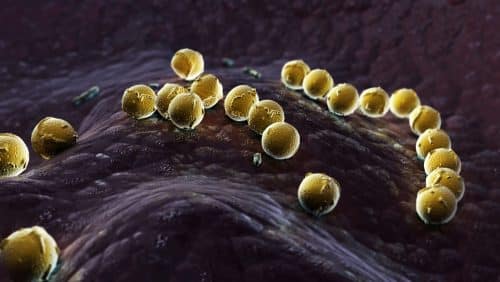Researchers describe how the protein that allows strep and staphylococcus bacteria to attach to human cells is produced and packaged. The research could promote the future development of new types of antibiotics.

[Translation by Dr. Nachmani Moshe]
Researchers from Harvard Medical School, the University of California, San Francisco, and the University of Georgia describe how the protein that allows streptococci and staphylococci bacteria to attach to human cells is produced and packaged. The research, which may promote the future development of new types of antibiotics, has long been published in the scientific journal Journal of Biological Chemistry.
All bacteria have a normal excretory system that allows them to secrete different types of proteins out of their cells. An important family of extracellular molecules produced by harmful bacteria is called adhesins, proteins that allow the bacteria to stick to host cells. For unknown reasons, the adhesins of streptococcus and staphylococcus bacteria, disease-causing bacteria involved in significant infections such as meningitis, pneumonia, and pericarditis, are transported through a secretion system similar to the normal secretion system, but one designed exclusively for adhesins. This is similar to a situation where a factory that processes different types of goods will have a separate set of doors and forklifts for only one type of goods. Explains one of the researchers involved in the article: "I was intrigued by the fact that there is a second excretory system in some bacterial strains that is separate from the normal excretory system and that is only intended for one type of proteins." "There is a whole mechanism, and it is responsible for only one action."
The researchers found that in order to be transported from place to place, the adhesin protein must undergo a change in specific sugar units by three enzymes that work in a fixed sequence. These changes in the sugar units stabilize the protein and increase its adhesion to the target cells. Moreover, the experiments showed that two proteins in this pathway, whose activity was previously unknown, are able to bind to these sugar units, an action that probably allows them to transfer the adhesin to the cell membrane where there is an exit channel intended for these proteins. "Explains one of the researchers: "The system is particularly complex since it involves the modification of proteins, the activity of a chaperone protein and the cages in the cell membrane, so we faced many challenges in order to decipher it."
The reason this bacterium uses a separate export pathway for adhesins remains unknown. However, in light of the fact that this pathway is unique to these bacterial strains, the new insights could help researchers in the future develop particularly selective antibiotic substances that could treat infections caused by the activity of these bacteria.
Article Summary
The news about the article
More of the topic in Hayadan:
